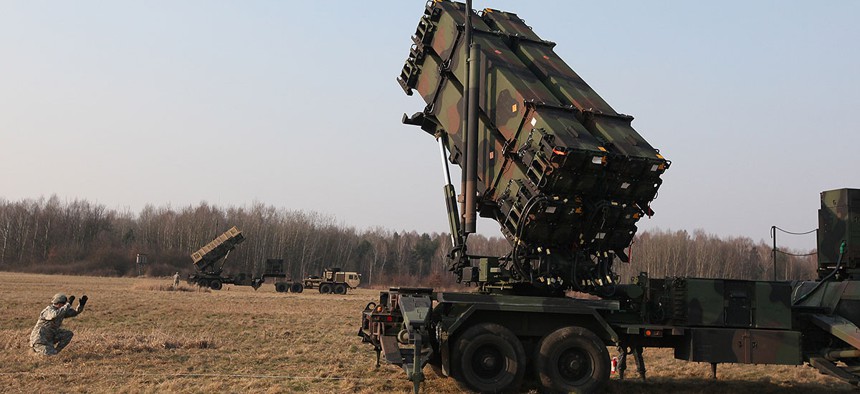Someone Thought it Was a Good Idea to Blow up a $300 Drone With a Patriot Missile

U.S. troops from 5th Battalion of the 7th Air Defense Regiment at a test range in Sochaczew, Poland, in March, 2015, demonstrating the U.S. Army’s capacity to deploy Patriot systems rapidly within NATO territory. Czarek Sokolowski/AP
Talk about overkill.
Talk about overkill.
At a recent military conference in Washington, D.C., Gen. David Perkins told the audience a U.S. ally used a Patriot missile to shoot down a small consumer drone. These missiles are radar-controlled warheads designed by Raytheon, and cost up to $3 million apiece. Presumably out of deference to the fact that this was a hilarious overuse of a very expensive weapon, Perkins did not say which country’s military carried out the attack.
“That quadcopter that cost 200 bucks from Amazon.com did not stand a chance against a Patriot,” he said.
But Perkins brought up this point to illustrate how many of the weapons used on the battlefields today are not really the smartest choices against the sorts of technologies many groups, such as ISIS in Iraq, are using against the U.S. military and its allies.
“I’m not sure that’s a good economic exchange ratio,” Perkins said. “In fact, if I’m the enemy, I’m thinking, ‘Hey, I’m just gonna get on eBay and buy as many of these $300 quadcopters as I can and expend all the Patriot missiles out there.'”
Perkins goes on to explain that the solutions for these new sorts of improvised threats will likely not involve costly traditional weapons like Patriot missiles, but new solutions, such as cyberwarfare, where drones can be disabled through hacking, or possibly remotely disabled.
There are companies, such as Dedrone, that sell systems that allow authorities to detect drones being flown in restricted areas based on the radio signals they emit, and figure out where the pilot is. This can help mitigate the sorts of threats that a small consumer drone, perhaps strapped with a homemade explosive device, could have on a public event, such as football match, or a concert.
There are other groups working on actually disabling drones that may present a threat. Japanese police have tested using other drones, carrying giant nets, to catch drones. Others are working on systems that disrupt a drone’s GPS signal and force it to land. Dutch police even trained eagles to nab drones with their talons.
And then there are the enterprising Americans who exercise their second-amendment rights by just shooting drones out of the sky. Whatever the solution, it’s likely there will be myriad ways the U.S. and others can defend against the threats of small consumer drones that don’t involve a 1,500-pound missile.


